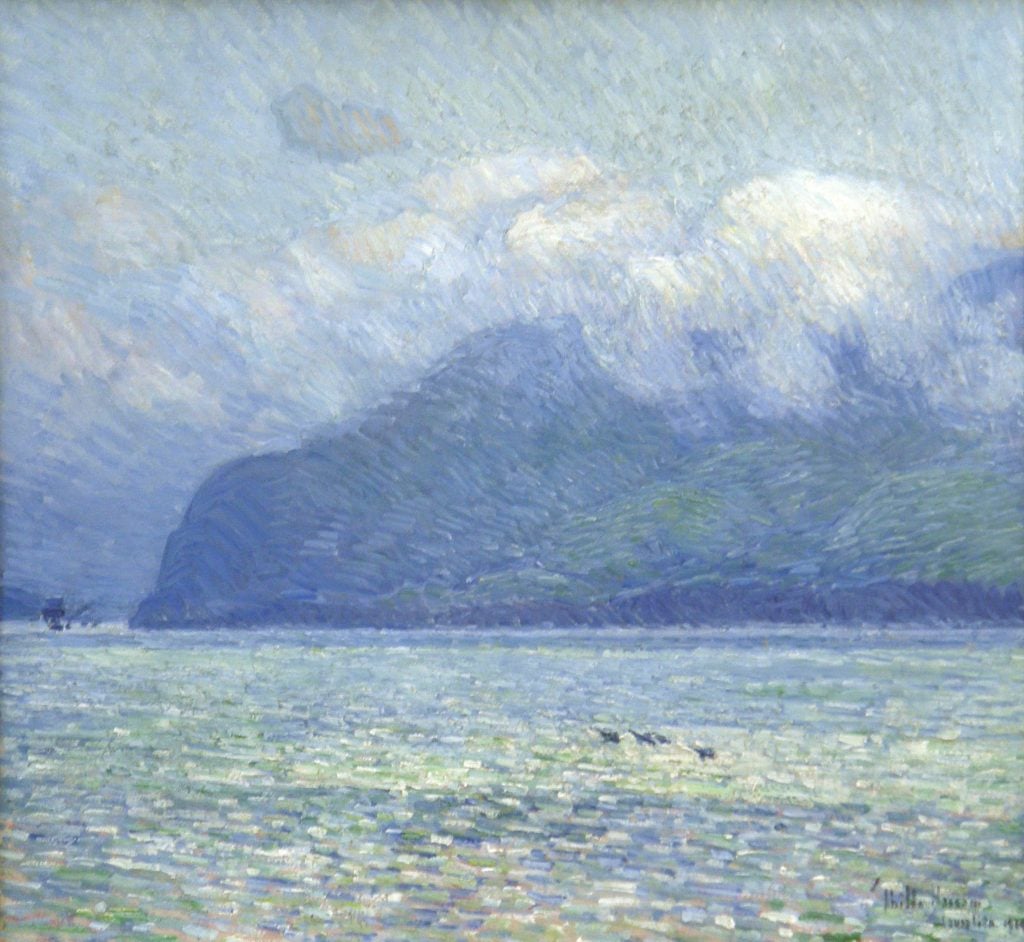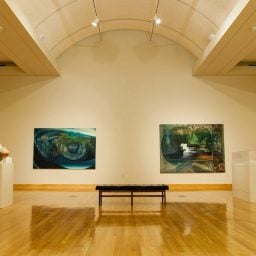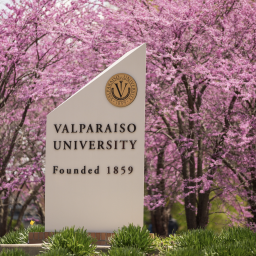Once again, an art museum has come under fire for plans to sell art from its collection. This time, the institution in question is the Brauer Museum of Art at Indiana’s Valparaiso University, and it is looking to sell a trio of artworks by Georgia O’Keeffe, Frederic Edwin Church, and Childe Hassam estimated to be worth over $20 million to fund improvements to freshman dormitories.
In 2008, appraisers valued the Church painting, Mountain Landscape, at about $2 million. The following year, experts valued Hassam’s The Silver Vale and the Golden Gate at $3.5 million. But the true moneymaker is expected to be O’Keeffe’s Rust Red Hills, which is worth $15 million, according to a 2016 appraisal.
Richard Brauer, the museum’s namesake and founding director, is speaking out against the plans to sell the works. If the university goes through with it, the retired art professor wants his name removed from the doors of the institution, which opened under its current name in 1995. (The lead donors, the Urschel family, gave a $3 million gift to the university on the condition that the museum’s 17,000-square-foot facility be named after Brauer.)
“For Valparaiso University’s Museum of Art to have my name has conferred a high honor on me, but with this sale it will wrongly reflect my approval of its utterly disgraceful, irreparably existentially diminishing, unethical and seemingly unnecessary, museum art collection sale actions!” Brauer wrote in an email to Jose Padilla, the university’s president, in January, according to the Chicago Tribune.
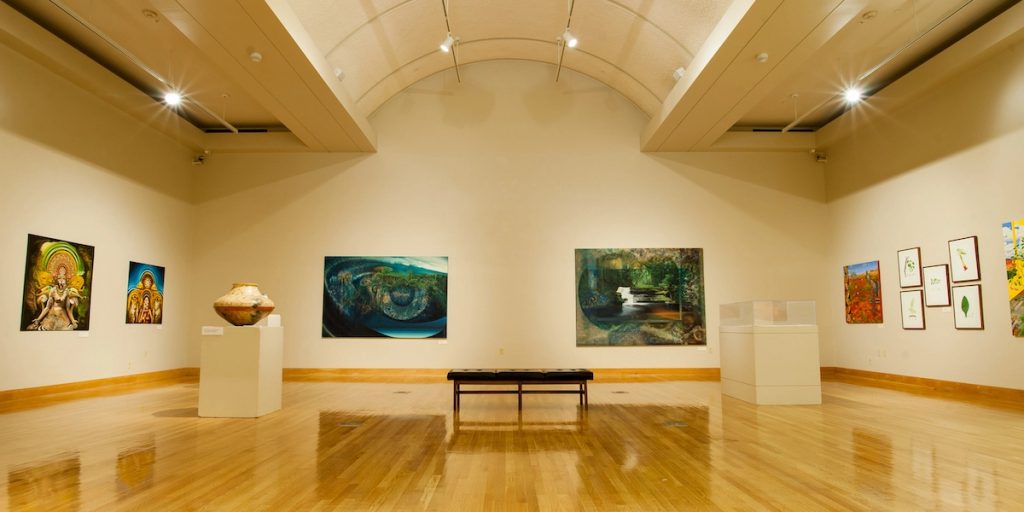
The Brauer Museum of Art at Indiana’s Valparaiso University. Photo courtesy of the Brauer Museum of art.
Brauer believes that a sale would violate the terms of the 1953 Sloan Trust Agreement that funded the purchase of the works, which are among roughly 5,000 in the museum collection. It would also be against the guidelines of art museum organizations such as the Association of Art Museum Directors, which until last year prohibited the sale of work for anything other than funding the purchase of additional art. (Last fall, the policy was updated to allow deaccessioning to fund the costs of caring for collections.)
For his part, Padilla seemed unperturbed by what the loss of the paintings could mean, both to the students who would no longer have access to these important artworks, and to university as a whole.
“Our actions will be based on the best interests of our students, mission, and entire campus. Not just one small piece of it, especially when that piece is not part of our strategic plan and our core mission of educating students and giving them the best campus residential experience,” Padilla wrote in response to Brauer’s email.
Enrollment at Valpo has fallen from about 4,500 in 2015 to around 3,000 this year. (The university law school closed in the interim.) Padilla believes improvements to the freshman dormitories will prove key to improving recruitment and retention of students.
Despite denigrating the Brauer collection as inessential, Padilla told the Tribune that “the university remains committed to our campus art museum as a vital and vibrant destination for students and the local community,” promising to continue the museum’s exhibition program.
But that could be more difficult for Valpo in the wake of the proposed sale.
When Randolph College’s Maier Museum of Art in Virginia sold a George Bellows painting for $25.5 million to help fund its operations in 2014, the Association of Art Museum Directors sanctioned the institution, instructing its members not to loan work to or collaborate with the Maier.
“That a campus museum exists within the larger ecosystem of its parent educational institution does not exempt a university from acting ethically, nor permit them to ignore issues of public trust and use the museum’s collections as disposable financial assets,” the Association of Art Museum Directors, the American Alliance of Museums, the Association of Academic Museums and Galleries, and the Association of Art Museum Curators wrote in a joint statement condemning Valpo’s plans to sell the three paintings.
“Although the Brauer Museum is not a member of AAMD, collectively we remain hopeful that the university will reconsider its decision,” the statement continued. “We stand ready to assist, in any way we are able, to find other solutions to the institution’s needs without resorting to the selling of works that can never be recovered, to the great detriment of current and future students and community members.”
Valpo’s board of directors first voted to sell the artworks at an October meeting, and reaffirmed that decision at a second meeting last month. The school officially announced its intentions to sell the paintings on February 8, billing it as part of the five-year strategic plan unveiled in July. The search committee for the Brauer’s new director, Jonathan Canning, who took up the post in August, was unaware of any conversations surrounding the works’ possible sale.
In a statement to Artnet News, a spokesperson for Valpo echoed Padilla’s conviction that the sale will “fund a facility that will not only attract students and support retention, but will enhance the academic and the residential experiences of our students for years to come.”
“We are saddened by Richard Brauer’s request to distance himself from our museum,” the statement continued. “Regardless, we want to express our appreciation to Professor Brauer for his time, service, and dedication to the museum and to Valparaiso University.”
The proposed sale is expected to be a topic at the faculty senate meeting on February 15.
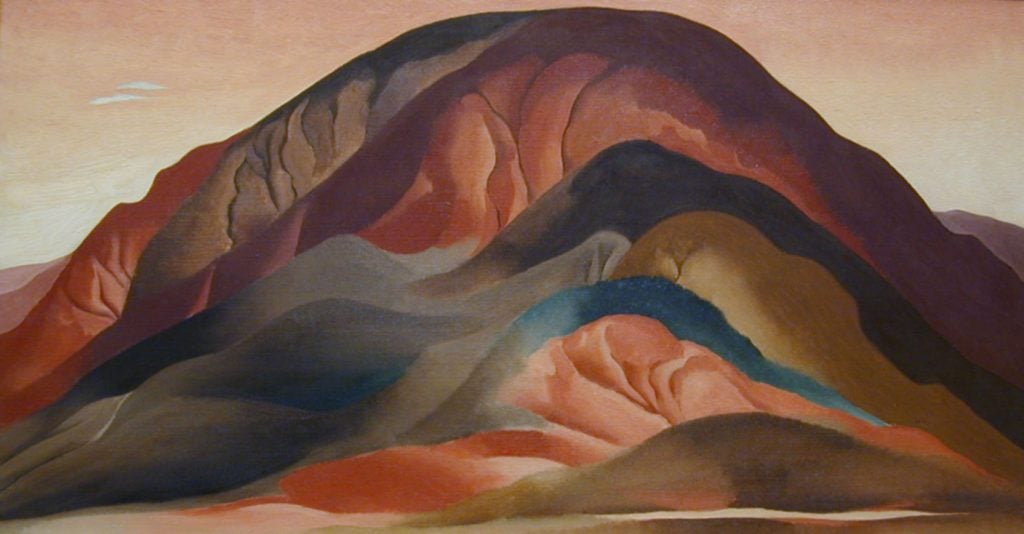
Georgia O’Keeffe, Rust Red Hills (1930). Collection of the Brauer Museum of Art at Indiana’s Valparaiso University.
Representatives from Christie’s and Sotheby’s have both visited the museum to inspect the works in question, reports ARTnews.
The O’Keeffe painting in particular is historically significant, having been exhibited at An American Place, the New York gallery of Alfred Stieglitz, O’Keeffe’s husband.
“Red Rust Hill… is one of the Brauer Museum of Art’s most beloved paintings,” former Brauer Museum director Gregg Hertzlieb wrote in a 2009 essay in the Valparaiso Poetry Review, calling it “a masterpiece by the artist and a concrete example of the wisdom and prescience of the museum’s founding director, Richard Brauer.”
Brauer helped convince the school’s museum collection committee to purchase the painting way back in 1962. At the time, it was his first year working in the university art department, and overseeing what was then the Valparaiso University Museum and Collections, housed in the library basement.
The $5,700 work was only the second piece he had acquired on the job, and Brauer actually wrote to O’Keeffe herself to have the 1930 canvas authenticated. The painting has since been loaned to exhibitions around the world, and is, according to Hertzlieb, “a true gem in the Brauer’s collection.”
